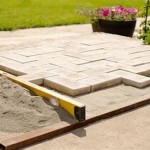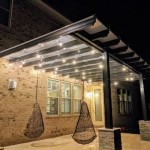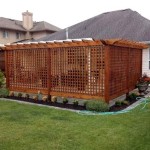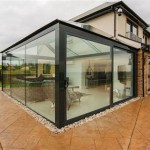The Enduring Appeal of a Cedar Patio Table
A cedar patio table represents a significant investment for many homeowners seeking to enhance their outdoor living space. The selection of outdoor furniture involves considerations of aesthetics, durability, functionality, and cost. Cedar, a naturally durable wood, offers a compelling combination of these factors, making it a popular choice for patio tables and other outdoor furnishings. This article will delve into the properties of cedarwood, the benefits of choosing a cedar patio table, considerations for maintenance, and various styles available to suit different preferences.
The term "cedar" encompasses a variety of coniferous trees belonging to the plant family Cupressaceae. Different species, such as Western Red Cedar (Thuja plicata), Eastern Red Cedar (Juniperus virginiana), and Spanish Cedar (Cedrela odorata), are commonly used in furniture making. While technically a juniper, Eastern Red Cedar possesses many of the characteristics associated with true cedars. Each species exhibits unique color variations, grain patterns, and aromatic qualities, contributing to the distinct character of cedar furniture.
Western Red Cedar, known for its straight grain and reddish-brown hue, is particularly prized for its exceptional resistance to decay and insect infestation. Eastern Red Cedar, often lighter in color with prominent knots, is valued for its aromatic properties and ability to repel moths. Spanish Cedar, frequently used in humid environments, boasts a lighter color and a distinct cedar scent, often employed in humidors and boat building.
Natural Durability and Resistance
The primary advantage of a cedar patio table lies in the inherent durability of the wood. Cedarwood contains natural oils and resins that act as preservatives, protecting it from rot, decay, and insect damage. These compounds make cedar naturally resistant to the effects of moisture, making it well-suited for outdoor use. Unlike some other wood species, cedar does not require pressure treating with harsh chemicals to achieve a long lifespan in outdoor conditions. This natural resistance contributes to the overall longevity of the furniture and reduces the need for frequent replacement.
The natural oils within the cedarwood also contribute to its resistance to warping and cracking. Fluctuations in temperature and humidity can cause many types of wood to expand and contract, leading to structural damage. Cedar, however, exhibits a relatively low shrinkage rate, meaning it is less prone to these issues. This dimensional stability helps the patio table maintain its shape and integrity over time, even in challenging outdoor environments. The cellular structure of cedarwood contributes to its ability to withstand moisture without significant changes in dimension.
Furthermore, cedar's natural defenses extend to insect pests. The aromatic oils present in the wood repel common insects such as termites, carpenter ants, and moths. This natural insect resistance reduces the likelihood of infestations that can compromise the structural integrity of the patio table. While no wood is completely impervious to insect damage, cedar offers a significant degree of protection compared to other less durable species. This resistance minimizes the need for chemical treatments and contributes to a more environmentally friendly outdoor living space.
The density of cedarwood also plays a role in its durability. While not as dense as some hardwoods, cedar possesses a sufficient density to withstand normal wear and tear associated with outdoor use. The fibrous structure of the wood provides strength and resilience, allowing the patio table to withstand the weight of objects placed upon it without significant deformation. This combination of density and natural preservatives contributes to the overall robustness of the furniture.
Aesthetic Appeal and Design Versatility
Beyond its practical advantages, a cedar patio table offers significant aesthetic appeal. The natural beauty of cedarwood, with its warm tones and distinctive grain patterns, adds a touch of elegance to any outdoor setting. The color variations within the wood, ranging from light amber to deep reddish-brown, create a visually appealing surface that complements a variety of design styles. The wood's natural character enhances the overall ambiance of the patio, creating a welcoming and inviting space for relaxation and entertainment.
Cedar's versatility allows for a wide range of design options. The wood can be easily worked into various shapes and styles, from rustic and traditional to modern and contemporary. Cedar patio tables are available in a variety of sizes and configurations, including round, rectangular, square, and oval designs. Detailing such as beveled edges, carved accents, and intricate joinery can further enhance the visual appeal of the table. The flexibility of cedar allows homeowners to select a table that perfectly complements their existing patio furniture and overall design aesthetic.
The aromatic properties of cedarwood also contribute to its aesthetic appeal. The distinct cedar scent adds a sensory dimension to the outdoor experience, creating a pleasant and relaxing atmosphere. The aroma of cedar is often associated with calmness and tranquility, enhancing the overall enjoyment of the patio space. While the scent may fade over time, it can be refreshed with light sanding or the application of cedar oil.
Moreover, cedar accepts stains and finishes readily, allowing homeowners to customize the appearance of their patio table. Staining can enhance the natural color of the wood or create a completely different look, depending on personal preferences. Clear finishes can protect the wood from the elements while allowing the natural grain to shine through. Paint can also be applied to cedar, although it is generally recommended to use exterior-grade paint specifically formulated for wood. The ability to customize the appearance of a cedar patio table allows homeowners to create a unique and personalized outdoor space.
Maintenance and Care Considerations
While cedar is naturally durable, proper maintenance and care can extend the life of a cedar patio table and preserve its aesthetic appeal. Regular cleaning and occasional refinishing are essential for protecting the wood from the elements and preventing damage. By following a few simple guidelines, homeowners can ensure that their cedar patio table remains a beautiful and functional addition to their outdoor living space for years to come.
Regular cleaning is crucial for removing dirt, debris, and mildew that can accumulate on the surface of the table. A mixture of mild soap and water is typically sufficient for cleaning cedar. Use a soft brush or cloth to gently scrub the surface, paying particular attention to areas that are prone to dirt buildup. Avoid using harsh chemicals or abrasive cleaners, as these can damage the wood. Rinse the table thoroughly with clean water and allow it to dry completely before applying any finishes or sealants. Pressure washing should be avoided as it can damage the softer grain of the wood.
The application of a sealant or finish can further protect the cedar patio table from the elements. A clear sealant will help to repel water and prevent moisture from penetrating the wood. Oil-based finishes can enhance the natural color of the cedar and provide additional protection against UV damage. Choose a finish specifically designed for exterior use and follow the manufacturer's instructions carefully. Reapply the finish every one to two years, or as needed, to maintain its protective properties. Regular application of a UV-resistant finish can significantly reduce the graying effect of sunlight.
During periods of inclement weather, it is advisable to cover the cedar patio table to protect it from excessive moisture and sunlight. Patio furniture covers are available in a variety of sizes and materials and can provide a barrier against rain, snow, and UV rays. If a cover is not available, consider storing the table in a sheltered location, such as a garage or shed. Prolonged exposure to harsh weather conditions can accelerate the degradation of the wood, even with proper maintenance. Proper storage during off-season months is crucial.
Inspecting the cedar patio table regularly for signs of damage is also important. Check for cracks, splits, or insect activity. Address any issues promptly to prevent them from escalating. Small cracks can often be repaired with wood filler, while more significant damage may require professional repair. Inspecting the joints and hardware of the table is essential to maintaining its structural integrity. Tightening loose screws and bolts can prevent the table from becoming unstable.
Finally, consider the placement of the cedar patio table. Avoid placing it in direct contact with soil or standing water, as this can promote fungal growth and decay. Elevating the table slightly on blocks or pavers can help to improve drainage and prevent moisture damage. Positioning the table in a shaded area can also help to protect it from excessive sunlight and UV exposure. Thoughtful placement can significantly extend the lifespan of the furniture.

Cedar Patio Table Kreg Tool

Outdoor Cedar Patio Table By Steve S Simplecove

Cedar Patio Table Kreg Tool

Beautiful Cedar Patio Table Ana White

Bryan S Site Diy Cedar Patio Table Plans

Cedar Patio Table Kreg Tool

Bryan S Site The Finished Diy Cedar Patio Table Outdoor Furniture Decor Plans

Cedar Outdoor Furniture Patio Sets Garden Com

Patio Furniture Classic Cedar Garden And Gazebos

Diy Cedar Patio Table 100 Things 2 Do








